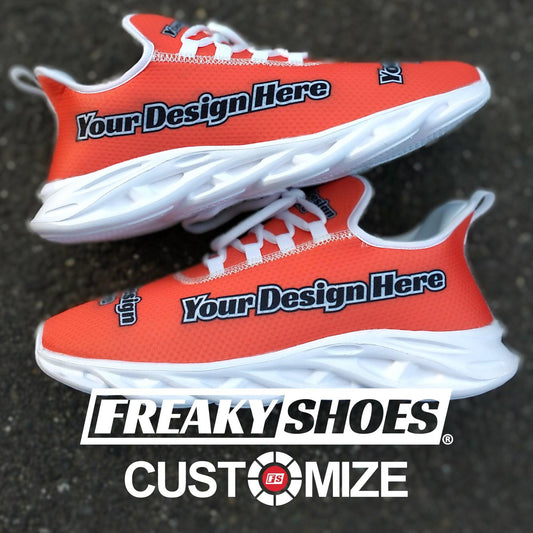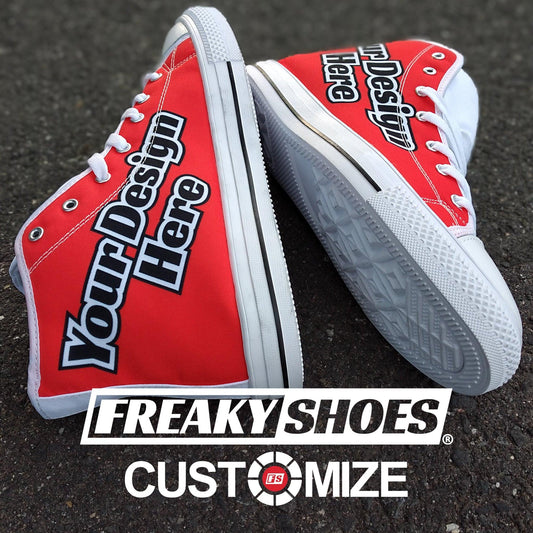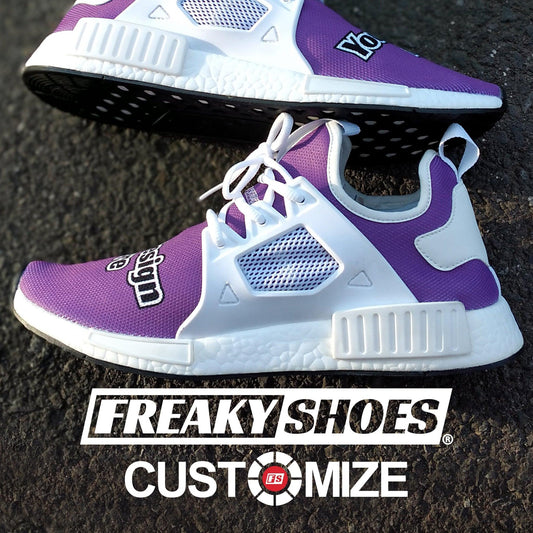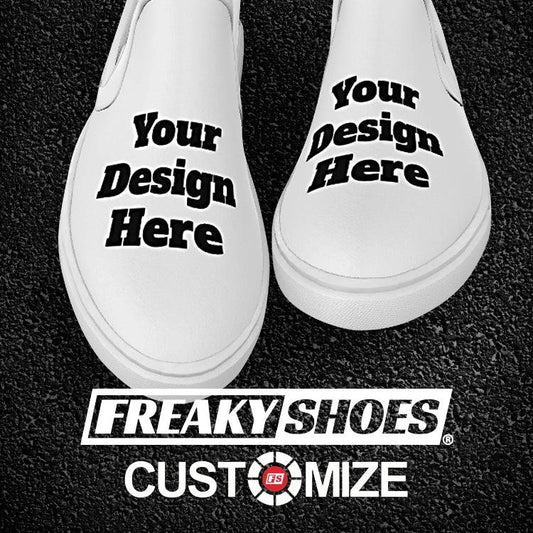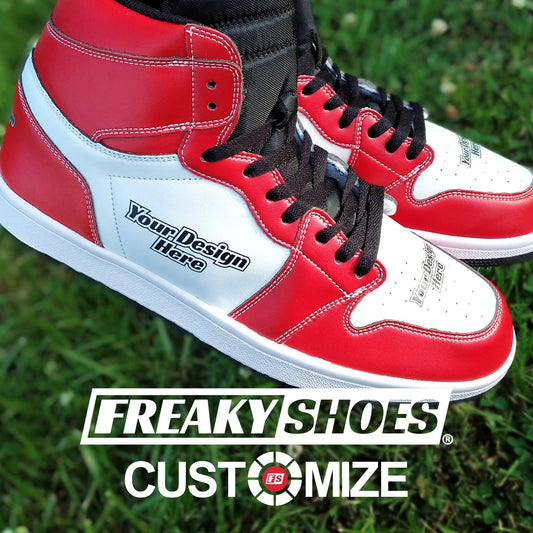The Most Common Shoe Quality Defects and Ways To Handle Them
Like all industrial products, a pair of shoes can also face multiple issues. These problems can arise from either during their manufacturing process or due to improper use. For instance, it is not appropriate to wear your athletic and running shoes to a construction site. If you do, you can be assured that your sneakers will last for a much shorter time than their usual timeframe. When these types of situations arise, there is not much to do to stop it.
However, you can control the problems that do come up during the manufacturing processes, so you can always eliminate the issue altogether, or if not, then minimize it. This article tells you all about the most common types of defects and quality problems in shoes that can arise during the shoe production stages. Just identifying the issue is not enough, so you can also find helpful ways to cope with the problem before it gets out of hand.
Freaky Shoes is a fantastic website where you can create and customize your own pair of shoes and sneakers. Design your own shoes online and have top-quality shoe wear delivered at your doormat. In the new world era, why go for off the rack shoes when you can go for something as unique as you? Freaky Shoes provides custom designed and printed shoes using your own choice of colors, styles, and patterns. Let your imagination run wild, while Freaky Shoes work its magic!
Categories Under Which Shoe Quality Defects Can Be Classified
Before discussing the most common types of defects that can be seen and found in shoes, it is crucial to understand how severe they are. This section of the article lets you see the different grades in which quality control experts classify them. These quality defects can be rightly categorized into three different classes based on their severity.
These types of defects refer to the utterly hazardous flaws in a shoe that strictly fail to even meet the necessary requirements. Critical anomalies like these may impose severe danger, injuries, and risk to a customer's health and safety.
- Major Defects
These defects refer to the significant and visible defects that ultimately affect the appearance, show, durability, and merchandise of the shoes. These types of errors can cause consumer dissatisfaction and also have an impact on the sales of your product.
These defects do not have a direct impact on wearing shoes. Still, they can eventually cause a reduction in the overall shoe standard and quality. Customers are not likely to ask for a refund or return the product.
However, they can be unhappy with the quality of the product. Minor defects can lower the consumer's expectation of the product since the brand was unable to fulfill and deliver its promise.
Common Defects in Shoes and Ways to Fix Them
The majority of the shoe parts are either stitched together or are simply stuck together with glue. Sometimes the glue might be applied carelessly or in abundance. This way, the excess glue pours out of the joint and becomes visible to the customers. If the glue is used in excess in a noticeable part of the shoe, it can be a significant defect.
This kind of shoe defect can ultimately spoil the entire look and appearance of a shoe. It leads to dissatisfied customers returning back with their shoes and asking for a refund. This type of defect can easily be eliminated in two ways:
- Focus on the manufacturing process and guarantee that the glue application is done correctly and used adequately.
- This type of defect can also be fixed in the subsequent steps of the manufacturing process.
Sometimes, using more oil or wax than actually required can also adversely affect your shoes. Many shoe manufacturers use chemicals and adhesives during the manufacturing stages. Sometimes, the oil and wax residues can cause extreme dissatisfaction amongst customers.
- When shoes are exposed to several adhesives and chemicals throughout the production stages, they are usually left with residues like oil and wax.
- It is recommended to avoid using an excess of oil or wax. If a surplus of anything occurs, it should always be wiped away instantly before it is packaged and shipped.
Another common defect that can arise in shoes sometime after being worn is when two glued or joint surfaces like the upper and sole come apart. Weak bonds may also result when the two surfaces are not glued together correctly before the shoes ultimately leave the production house and get shipped. This type of defect can be due to one of the following reasons:
- Incorrect or insufficient application of glue
- The wrong kind of glue has been used.
Note that this is a kind of quality defect that can instantly provoke the customer to ask for a refund and return back the shoe. Solving this issue is rather simple because all the manufacturers have to do is inspect and adjust the manufacturing process. To prevent this type of faulty defect, please ensure that the right glue and application method is used.
- Scuff Marks or Abrasions
Sometimes the scuff marks can be seen in the shoes. Scuff marks are marks or scratches that are especially visible on glossy or leather-based shoe wears. The primary reason why you can sometimes spot scuff marks on shoes is that they have probably been poorly and carelessly dealt with.
It is also possible that the shoes were improperly packaged before they were ready to be transported. In case you spot this kind of defect in your footwear, you need to identify and understand which stage of the manufacturing process led to these scuff marks. After you have discovered it, you can deal with the issue accordingly.
Note that scuff marks can be tricky to spot, so you should always have an approved shoe sample or a team of renowned inspection technicians to ensure that there are no scuff marks. This sample can be incredibly useful to differentiate amidst which shoes can be accepted and which should be fixed.
- Asymmetrical Shoes
When different shoe parts are brought and assembled together into one whole, it is crucial to ensure that all the parts are aligned accurately. In any standard pair of shoes, the right and left halves are connected seamlessly. They both should tail a flawlessly straight centerline that runs lengthwise through the shoe.
Any seam that is not straight or runs parallel through this line will be considered a defect big enough for the customer to return with the shoe. The simplest method of identifying this quality defect is comparing the defective shoe against an ideal sample of the same model and its equal right and left parts.
Almost all pairs of shoes are produced in standard sizes. Anticipating the physical aspects of a shoe is a vital process fulfilled by every customer to relate to the indicated sizing. However, shoes can be sized incorrectly due to some of the following reasons.
- The tooling of your shoes might be worn and do not have the right tolerance anymore.
- The packaging and handling processes have been carelessly dealt with.
In most cases where the shoe size may be incorrect, it may be a result of poor packaging and handling rather than worn out tooling. In order to make sure that your shoe size is correct, it is crucial to examine your shoes before they get shipped.
In cases where issues are detected, the packaging of the shoe and shipping location should be thoroughly investigated to determine the leading cause of the problem.
- Metallic Components and Sharp Points
Producing a pair of shoes typically calls for stitching and requires tacks, nails, and various other sharp objects. Sometimes, pointed needles might break into half and remain in one of the shoes. In other cases, the tacks and nails might not be appropriately flattened, which leads to sharp or jagged points. These kinds of metal objects can be unsafe and can result in severe injuries too.
- If the shoes do not contain any designs which make use of metal fragments, it is better to use a metal detector.
- If there is any part that contains metal or metallic objects, it can be detected with the help of a metal detector.
- Contrariwise, if your shoes do come with designs that incorporate metal, then they must undergo the standard quality control procedures and be thoroughly inspected.
This is an essential step to guarantee that the shoes are manufactured correctly and do not have any protruding or sharp points that could lead to severe injuries.
Inspecting Your Footwear From The Inside
The faulty defects do not necessarily have to appear only on the outside of the shoe. It is absolutely necessary to inspect your footwear from the inside to see if there are any quality defects in the inner parts. After you have examined the shoes from outside, check the inner part. A shoe might look great from the outside, but faulty internal parts will affect the merchandise.
There are many essential things you need to inspect from the inside. For instance, you should make sure that the lining is wrinkle-free and clean. There should be no glue, lumps, or bumps around the shoe collar. It is imperative to check for any signs of staples or sharp nails in leather shoes.
In sport's shoes, special attention must be paid to the footbed, which should be leveled, straight, and accurately fitted. A shoe with a small footbed is likely to slide back and forth, whereas a large footbed can curl or wrinkle.
The next thing to inspect is the tongue of your footwear. Always check if there are signs of lumps or wrinkles appearing. Gently rub your hand on the downside of your shoe to touch the toe cap and vamp from inside. If the stitching feels rough or there are signs of wrinkles along with the footbed, your shoe is defective.
Lastly, do not forget to check the shoelaces. If the laces are shorter or longer, they need to be adjusted. Of course, you can always work with a longer shoelace, but a shorter shoelace needs to be replaced.
Standard Shoe Quality Problems Worth Examining
There are a few other necessary things to inspect while conducting quality control inspections of your shoes. These issues can be classified under the list of common shoe quality defects.
- It is crucial to see if the pair of shoes or sneakers are clean or not, especially if they are white or light-colored.
- It can be incredibly challenging to produce white shoes in dirty factories since they always have a chance of getting dirty.
- The color of all the shoe parts should be on point, especially if the shoes are made of tricky fabric materials like leather or suede.
- The quality of the material used is another crucial factor to note for possible shoe defects. If the material is suede, check for the texture.
- Lastly, check for any rough cuttings or any wrinkles on the upper of your shoes.
A Conclusion on Shoe Quality Inspections
While doing an inspection for quality defects in shoes, it is essential to see if the common issues that exist are a one-time occurrence or an orderly issue that is affecting all the other shoes in a batch. It is vital to comprehend that all the operations carried within the factory are handled and managed by the same worker.
Lastly, checking for shoe quality defects inside your own factory warehouse makes you realize that this is a self-owned problem. At this point, it is crucial to question yourself on how this product has gotten so far. Such issues suggest that the final and utmost inspection was neglected and that the person in charge overlooked these issues before shipping the shoes.
This is why doing a thorough examination of shoe quality defects is an integral part of determining your products' sale and the reputation of your business.












